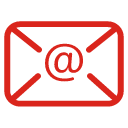Understanding Wholesale Printed Circuit Boards: A Comprehensive Guide
2025-07-30
Printed circuit boards (PCBs) are the backbone of modern electronic devices, serving as the primary platform for connecting various electronic components. When it comes to sourcing PCBs, the wholesale market offers a range of advantages, especially for businesses looking to scale their production or reduce costs. Understanding the fundamentals of wholesale printed circuit boards can help companies make informed decisions that benefit their operations.
Wholesale printed circuit boards refer to the bulk purchasing of PCBs directly from manufacturers or suppliers. This practice is common among businesses that require large quantities of PCBs for their electronic projects. By opting for wholesale, businesses can significantly reduce their costs per unit while ensuring a consistent supply of high-quality boards.
One of the key benefits of wholesale printed circuit boards is the cost-effectiveness. Buying in bulk often leads to lower prices, helping companies manage their budgets more efficiently. Additionally, wholesale purchasing can streamline procurement processes, reducing the time and resources spent on sourcing smaller quantities. This efficiency can be crucial for businesses that operate on tight production timelines.
The manufacturing process of printed circuit boards typically involves several steps, including design, fabrication, and assembly. When sourcing wholesale PCBs, it is essential to consider the manufacturer’s capabilities, such as the technology they use, the materials available, and their quality assurance processes. Different types of PCBs, including single-sided, double-sided, and multilayer boards, cater to various applications. Depending on the complexity of the electronic device, the choice of PCB type can greatly impact performance and reliability.
In addition to cost savings, wholesale printed circuit boards provide businesses with the opportunity to scale production. As demand for electronic devices continues to rise, manufacturers who work with wholesale suppliers can quickly adapt to changes in production volume. This flexibility is vital in an industry characterized by rapid technological advancements and fluctuating consumer preferences.
Moreover, businesses should also consider the lead times associated with wholesale printed circuit boards. While bulk orders can lead to quicker restocking, it is crucial to communicate effectively with suppliers to understand delivery schedules and any potential delays. Building strong relationships with PCB manufacturers can also enhance collaboration and ensure that businesses receive the support they need throughout the order process.
In conclusion, wholesale printed circuit boards are an essential component for businesses in the electronics industry. By understanding the benefits and processes involved in sourcing these components, companies can optimize their production capabilities and ultimately succeed in a competitive market. Whether you are a startup or an established enterprise, exploring wholesale options for printed circuit boards could be a strategic move for your business growth.
Wholesale printed circuit boards refer to the bulk purchasing of PCBs directly from manufacturers or suppliers. This practice is common among businesses that require large quantities of PCBs for their electronic projects. By opting for wholesale, businesses can significantly reduce their costs per unit while ensuring a consistent supply of high-quality boards.
One of the key benefits of wholesale printed circuit boards is the cost-effectiveness. Buying in bulk often leads to lower prices, helping companies manage their budgets more efficiently. Additionally, wholesale purchasing can streamline procurement processes, reducing the time and resources spent on sourcing smaller quantities. This efficiency can be crucial for businesses that operate on tight production timelines.
The manufacturing process of printed circuit boards typically involves several steps, including design, fabrication, and assembly. When sourcing wholesale PCBs, it is essential to consider the manufacturer’s capabilities, such as the technology they use, the materials available, and their quality assurance processes. Different types of PCBs, including single-sided, double-sided, and multilayer boards, cater to various applications. Depending on the complexity of the electronic device, the choice of PCB type can greatly impact performance and reliability.
In addition to cost savings, wholesale printed circuit boards provide businesses with the opportunity to scale production. As demand for electronic devices continues to rise, manufacturers who work with wholesale suppliers can quickly adapt to changes in production volume. This flexibility is vital in an industry characterized by rapid technological advancements and fluctuating consumer preferences.
Moreover, businesses should also consider the lead times associated with wholesale printed circuit boards. While bulk orders can lead to quicker restocking, it is crucial to communicate effectively with suppliers to understand delivery schedules and any potential delays. Building strong relationships with PCB manufacturers can also enhance collaboration and ensure that businesses receive the support they need throughout the order process.
In conclusion, wholesale printed circuit boards are an essential component for businesses in the electronics industry. By understanding the benefits and processes involved in sourcing these components, companies can optimize their production capabilities and ultimately succeed in a competitive market. Whether you are a startup or an established enterprise, exploring wholesale options for printed circuit boards could be a strategic move for your business growth.
Related news








